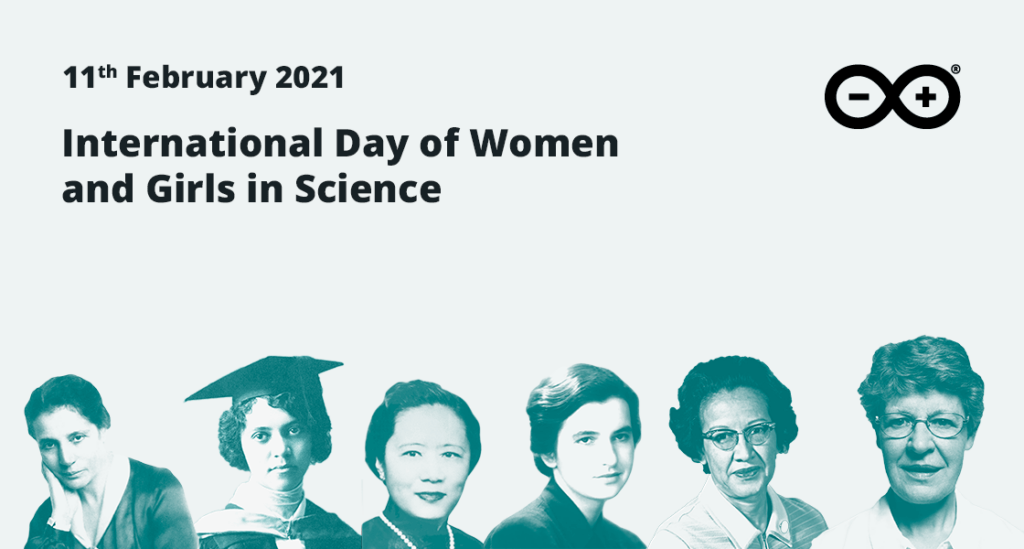International Day of Women and Girls in Science: 6 scientists you should know about

Science and technology empower people to change the world. At Arduino, we work every day to make them simple and accessible to anyone regardless of gender, ethnicity, age, background, nationality, and sexuality. Unfortunately, not all contributions are given the same visibility, that’s why we are celebrating the International Day of Women and Girls in Science by highlighting six scientists who were not honored enough for their achievements. Giving these women the visibility they deserve, we hope to inspire our community to innovate in a more inclusive way and to create a better future together.
Lise Meitner (1878 – 1968)
Born in Austria, Lise Meitner made an extraordinary contribution to nuclear physics and oversaw his explosive potential. After the Ph.D. in Physics, she moved to Berlin and started working with chemist Otto Hahn. When Nazis annexed Austria, Meitner, who was Jewish, had to move to Stockholm. She kept working with Otto Hahn and contributed to the theory of nuclear fission. Hahn won the 1944 Nobel Prize, but could not credit Meitner for her contribution.
Alice Ball (1892 – 1916)
American born pharmaceutical chemist Alice Ball developed at age 23 a technique to make the oil injectable and absorbable by the body. Her method — credited only after her death as ‘’Ball method’’ — represented the most effective treatment for leprosy during the early 20th century. Tragically, Ball died of an illness before she could publish her results, and another chemist later published without giving Ball credit.
Chien-Shiung Wu (1912 – 1997)
Chinese-American physicist Chien-Shiung Wu is best known for conducting the “Wu Experiment”, which disproved a hypothetical physical law called the conservation of parity. Her experiment paved the way for several studies that led her colleagues Tsung-Dao Lee and Chen Ning Yang to win the 1957 Nobel Prize in Physics.
Rosalind Franklin (1920 – 1958)
When Rosalind Franklin took in 1952 the photo 51 in her lab — the first picture of DNA — she had no idea that she would become the center of a scientific controversy. The British chemist and accomplished X-ray crystallographer’s image was shared with James Watson and Francis Crick, who were working on identifying the structure of DNA. Franklin’s picture was key to deduce that DNA took the form of a double helix. However, in their paper about the discovery, they only mentioned Franklin in a footnote.
Katherine Johnson (1918 – 2020 )
With her calculations of orbital mechanics, mathematician Katherine Johnson played a critical role in the success of the first NASA crewed spaceflights. Trained as a human-computer, Johnson mastered complex manual calculations, mastering trajectories, launch windows and emergency return paths for spaceflights. Until 1958, Johnson and her African-American colleagues were required to work and eat in offices separate from those of their white peers. In 2019, Johnson was awarded the Congressional Gold Medal.
Jocelyn Bell Burnell (1943)
Irish Professor Dame Jocelyn Bell Burnell is credited with one of the most important discoveries of the last century: the radio pulsars. Pulsars are the by-products of supernova explosions; thanks to them, scientists can measure cosmic distances, study extreme states of matter and search for planets beyond Earth’s solar system. Pulsar’s discovery was recognized by the award of the 1974 Nobel Prize in Physics; however, she was not one of the recipients of the prize.
Leave a Reply
You must be logged in with your Arduino account to post a comment.